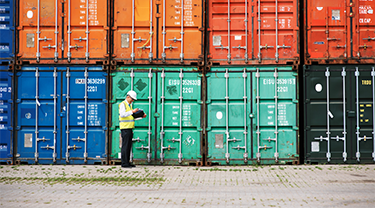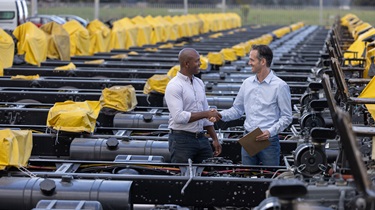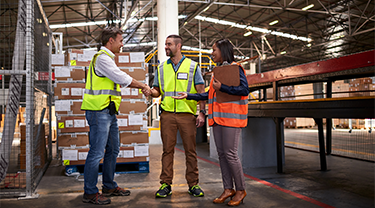There’s been so much written about supply chain disruptions in the last few years, it’s hard to imagine a new dimension to add to the pile of woes. Thankfully, container costs have returned to near pre-pandemic levels, and many of the global snags have been untangled. But here’s something you may not know: Trade regulatory activity by customs authorities is on the rise around the world. And this could have a huge impact on your operations and bottom line.
“Thirty years in the business, I’ve never seen anything like it. There’s been a couple hundred different trade and customs regulatory changes that have happened around the world. If you’re in the import-export space, you really need to be paying attention,” says Tracey Speares, Country Trade Compliance manager at confectionary giant, MARS Canada.
In the aftermath of COVID-19, she’s observed how customs regulations are increasingly being used as a mechanism to punish and as a means for governments to generate revenue. There’s been a marked increase in audits, especially around valuation and country of origin. Her advice: Exporter beware and be aware.
To be “customs compliant” means that you’re operating within the legal rules and procedures applicable to the goods being brought into or taken out of a customs territory. If you’re not compliant, you could be in for a world of hurt—deliveries don’t reach your customers on time because they’re held up in customs, and you get slapped with taxes and fines on top of that.
There’s a safeguard against those potential negative impacts: Develop your own export compliance program. At the end of the exercise, you’ll have a written set of guidelines detailing the process and outlining the expectations of all those affected in your organization.
The U.S. Department of Commerce lists nine key elements of an effective compliance program:
- Management commitment
- Continuous risk assessment
- Written export management and compliance program
- Compliance training
- Cradle-to-grave export compliance security
- Recordkeeping
- Export compliance monitoring and auditing
- Program for handling and reporting export compliance problems and violations
- Implementing corrective actions
At first, it may appear onerous, but like most proactive measures, the long-term gains are immeasurable. According to Speares, it doesn’t have to be complicated; in fact, she urges most companies to keep it simple. Perform an internal review of your processes with the goal of identifying gaps before you receive an official audit request from a customs authority. You can do this yourself, or have an independent company perform this activity. Just be sure to follow Canadian import and export trade regulations when establishing your own compliance program.
Unfortunately, there’s a misconception that customs compliance starts when a product crosses the border. But as Speares points out, in order to be truly effective, customs compliance needs to start as early as possible—ideally during the R&D process—and it should remain in place through to final delivery of a product to your customer.
There comes a time in every exporter’s life when you’re going to have to sit through a customs audit. One of the first questions the customs officer will ask is if you have documented procedures, such as a SOP. Short for standard operating procedure, a SOP is the essential document that spells out all of the terms agreed-to by your supply chain and logistics partners.
Each SOP will need to be customized, according to your specific needs, but as a rule, they include these basics:
- which carrier will be used;
- mode of transport;
- Incoterms;
- operational instructions;
- key contacts; and,
a. freight payment instructions.
One of the key partners you’ll need to engage when establishing a SOP is a freight forwarder. They’ll be your essential go-tos for setting up each trade lane required within your overall supply chain. Freight forwarders act as intermediaries, co-ordinating the shipment of goods using a variety of transportation carriers that deliver by air, rail, highway or marine routes.
Although they’re not the ones doing the actual shipping, they know where to find the best deals through their strong freight partnerships. If you’re not a high-volume exporter—routinely, filling entire containers on your own—you’ll benefit from the reduced rates freight forwarders can offer through consolidation arrangements.
“In the long run, companies save money using freight forwarders. Not just because of the discounts offered by our volume capacity, but the money saved in headaches, and especially in potential delays to customers,” says Arnon Melo, president of Mellohawk Logistics, and the current president of the Canadian International Freight Forwarders Association (CIFFA).
One of the most valuable assets held by a reputable freight forwarder is their partnerships in the various countries where you trade. According to Melo, the rules change on a continuous basis. Having your finger on the pulse of what’s happening around the globe can make the difference between getting the goods there on time and budget—or not.
Finding a trusted freight forwarder is easier than you think. CIFFA provides a membership directory that you can search by name, carrier code, or city. Similarly, Export Development Canada’s (EDC) InList can save you hours of legwork and guesswork, with a list of vetted service providers.
As with all aspects of your business, the onus is on you. It’s critical to surround yourself with experts—such as customs compliance consultants and logistics providers—but, it’s equally important to have a solid grasp of the territory they’ll cover.
Watch our free, one-hour webinar, Mastering the logistics of export success, for a primer on logistics and compliance best practices, featuring expert panelists:
- Arnon Melo: President, Mellohawk Logistics Inc. and current president, Canadian International Freight Forwarders Association (CIFFA)
- Tracey Speares: Country Trade Compliance manager, MARS Canada





